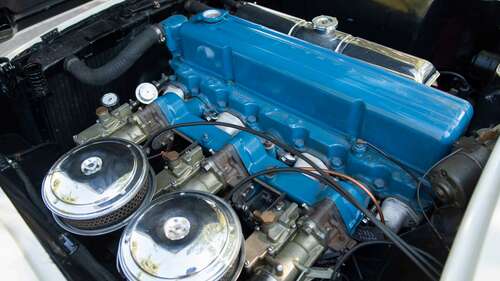
The Blue Flame Six is based on the architecture of an inline-six-cylinder Chevrolet truck engine known as the Stovebolt Six. First produced in 1929, the Stovebolt Six offered a starting point that Chevy engineers knew like the back of their hands. It needed a little tweaking, though. After all, they were building a sports car, and the lowly 115 horsepower and single-barrel carburetor just didn’t cut it.
Chevrolet engineers took that truck engine and worked some magic. Improvements included bumping the compression ratio up to 8:1 and installing a new camshaft. At the time, it had the highest lift numbers of any production car camshaft at 0.405 inches and 0.414 inches for the intake and exhaust, respectively. Combining these upgrades with a triple-carburetor setup (one for every two intake ports) netted enough extra zest to get it to that seemingly low 150 horsepower output.
A double-action mechanical fuel pump and Corvette-specific ignition system made sure this engine ran in tip-top shape all the way to its top speed of 108 miles per hour at a hair-raising (for the time) 4,800 rpm.
[Featured image by Morio via Wikimedia Commons | Cropped and scaled | CC BY-SA 3.0 DEED]

